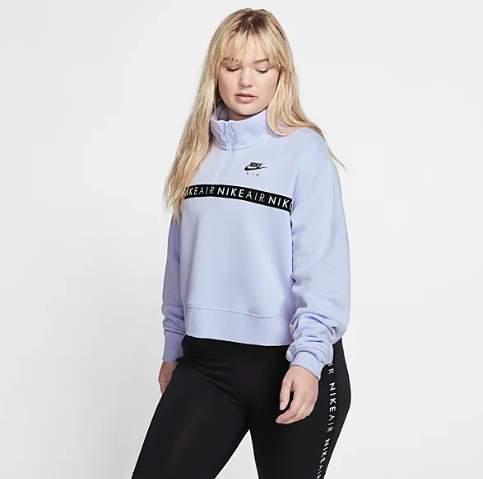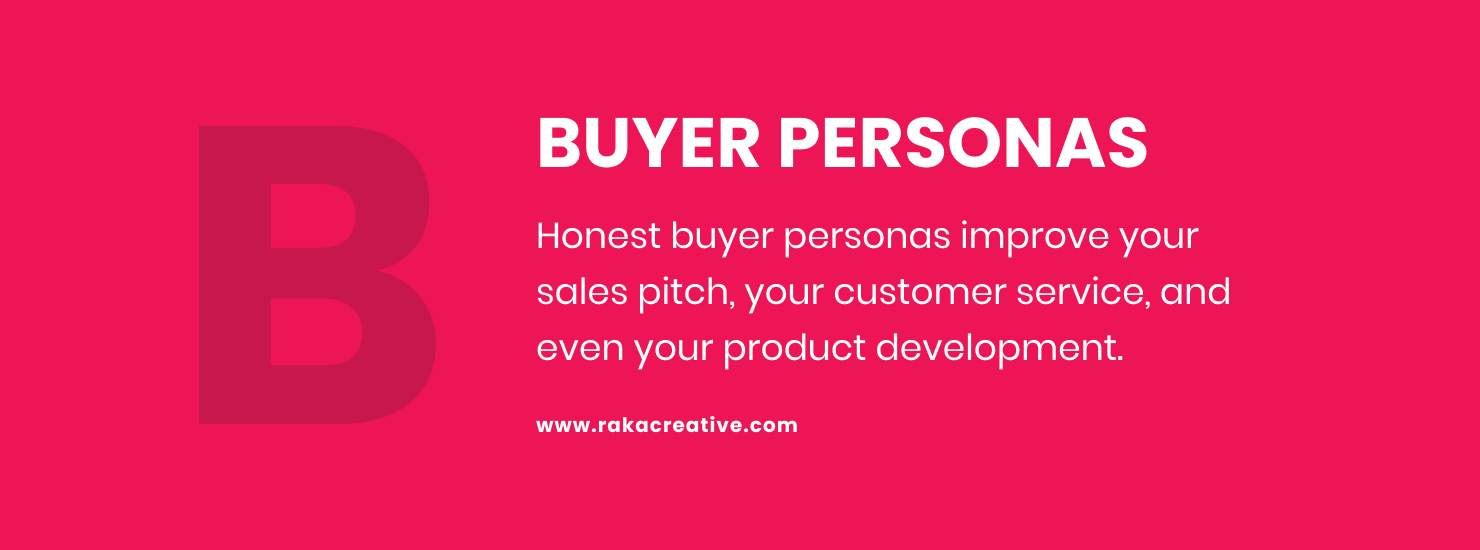This post was updated on July 26, 2019 to include Nike as an example of a company using buyer personas to improve its marketing. The term “buyer personas” has also been added to Raka’s Inbound Marketing Definitions, which you should definitely bookmark for reference.
If your company is just getting into this whole inbound marketing thing, chances are you’ve heard the phrase “buyer personas” tossed around.
Here’s a quick and—we hope—useful guide to buyer personas. Feel free to bookmark this page for later when you’re explaining the concept to your colleagues (and looking really smart doing it, you clever devil you).
In fact, here’s a link where you can download a fancy buyer persona template in Keynote or PPT so you can create polished, professional personas to share with your marketing, sales, or executive team.
- What is a buyer persona?
- How Nike defines its audience
- How to define your audience
- Buyer personas help you define your content
- Buyer personas help you get better leads
- Buyer personas help you get better ROI
What is a buyer persona?
Buyer Persona Definition
[bahy·er per·so·nuh] noun, singular
A semi-fictional representation of your ideal customer based on market research and what you already know about your existing customers.
Basically, your buyer personas are your target audience, but rather than just existing as an amorphous conglomeration of ideas and demographics that sort of describe the kind of person you’re trying to market to, a buyer persona defines that person according to demographic information and–most importantly–what information they are looking for.
This helps your marketing and sales teams create content (and service solutions) that are useful for your target customers. They also help your organization understand the first step in inbound marketing is providing value to real people who are, at this very moment, Googling real questions about real challenges at work.
“Having good buyer personas benefits your entire organization even beyond inbound marketing. Honest buyer personas improve your sales pitch, your customer service, and even your product development.” – Raka Partner Brian DeKoning
According to HubSpot, using marketing personas can make your website two to five times more effective.
How Nike defines its audience
When the international athletic gear giant dove into the numbers behind its NikePlus loyalty program and app, it found that loyalty app users spend 40% more than other customers. Nike saw an opportunity to increase sales by boosting NikePlus membership and set out in 2018 to triple the number of members over the next five years. Part of this strategy was to clearly define who it was targeting and according to this interview with company’s chief digital officer, Adam Sussman, Nike identified three market segments.
The Weekend Runner

Nike defines the “Weekend Runner” as a woman in her 30s with a half-marathon in her future. She loves the Nike Run Club app, which has ample data on her running habits and achievements. To keep the Weekend Runner engaged and hopefully sign up more women like her, Nike added features like advice from coaches and other recorded encouragement to the app. Of course, there’s also customized recommendations for shoes based on running habits.
The Style Shopper

Active wear is the clothing of choice for many young people today, and Nike is trying to secure their loyalty with its “Style Shopper” persona. This persona is a 26-year-old woman who wants to look good before, during, and after workouts. The NikePlus app added features about athletes and what they’re wearing to keep her posted on the latest trends, as well as a feature that allows her to messages athletes directly for recommendations. NikePlus also ups the ante on recommendations, offering a “Reserved for You” feature which selects products in the member’s size and has prompts to buy.
Dedicated Sneakerhead

If you’ve ever met a true Sneakerhead, you know part of the fun of buying limited-addition throwbacks or an athlete’s high-top release is finding them. NikePlus adds the thrill of sneaker hunting to its app, giving members access to exclusive product launches with its SNKR Stash experience. Through the app, Sneakerheads are sent on a city-based treasure hunt for virtual “Stash Spots” where they can purchase products via mobile.
How to define your audience
Ok. Now we’ve seen how Nike does it, so let’s get started on building some buyer personas for your company. Let’s say your company sells toothbrushes (just go with it) and one of your target buyers is local dentists’ offices. A traditional marketing approach might lead you to create a sales brochure to explain how awesome your toothbrushes are because they’re made of a green material or have the longest-lasting bristles. This is all important information, but first, you really need to know more about who you’re selling these toothbrushes to.
Creating buyer personas helps you define who your audience is, so you can develop targeted content for them in the places they are most likely to see it.
To get started, you might create a buyer persona for “Derrick Dentist, DDS.” But what do we really know about Derrick? Well, after doing some research and talking to your current customers, you learn that Derrick is not just a dentist, he’s a family man, between the ages of 35 and 55, works in a private practice, and makes about $160,000 per year.
Further digging shows he’s not a big Facebook guy, but hangs out on LinkedIn and reads guest posts on top dental trade websites. These details help you understand how and where to get Derrick’s attention and tell him about your awesome toothbrushes.
More importantly, what are Derrick’s key challenges, pain points, and questions when buying toothbrushes? What problem is he trying to solve? Is he looking for toothbrushes that are cheaper, last longer, a certain color, hardness, softness, or bristle length? If your company’s toothbrushes solve Derrick’s problems then you’re well on the way to making a sale.
Buyer personas help you develop content
Now that you and Derrick are pals, you need to create content (blog posts, white papers, e-guides, infographics, webinars, and more) that answer the questions and challenges he has. This content should be useful, provide a potential solution to his problem, and be written in a tone that will appeal to him.
As part of your buyer persona development, you should work with your sales team to list at least 10 questions (for each buyer persona) that your prospects and customers ask during the sales process or after they become customers. These questions are the blog posts your organization should plan to publish because the answers you provide are exactly what your target audiences are searching for.
If you do not feel like your sales and marketing team has a comprehensive understanding of the questions prospects ask, you should conduct some market research to gather this business intelligence. Three common approaches to learning more about what your buyer personas want to know include:
- Running an online survey
- Interviewing a few existing customers on the phone or in person
- Having a marketing team member sit in on the sales process with a sales representative
Your research should give you insights into your persona’s average day, their responsibilities, and their professional needs and frustrations—which you can solve for them (see how this works?). All this information gives you a more complete look at your persona’s motivations and how you can position yourself to meet them in their comfort zone.
So let’s say one of Derrick’s main pain points is finding brushes that are effective, but comfortable enough that patients will actually use them. You might plan a blog post titled, “The Best Toothbrushes for Balancing Clean and Comfort,” with a call to action that leads the visitor to download a printable infographic about brushing that can be put up in a dentist’s office.
Remember, inbound marketing is about reaching the customers where they live and bringing them back to your product or service through conversion. Creating buyer personas will help you understand your customer and create a buying experience they are more likely to respond to.
Buyer personas help you get better leads
When you develop a more strategic nurturing plan for your buyer’s journey, you’ll ultimately have more qualified leads coming in. And the more qualified leads you have, the better you can segment them for email campaigns and other initiatives. Did you know that personalized emails improve click-through rates by 14%, increase conversion rates by 10%, and drive 18 times more revenue than broadcast emails?
Remember, inbound marketing is about reaching the customers where they live and bringing them back to your product or service through conversion. Creating buyer personas will help you understand your customer and create a buying experience they are more likely to respond to.
Buyer personas help you get a better ROI
Last but not least, buyer personas help you make money. Isn’t that the reason you’re in business in the first place? Let’s go back to our toothbrush example. If you were spending millions of dollars casting a wide marketing net on everyone that uses a toothbrush, you’d go broke. Remember when your mother told you, “You’ll never be able to make everybody happy.” Smart woman! The same is true if you don’t precisely define your buyer personas.
By really identifying the who, what, where, when and why of your buyer personas you can really focus your marketing efforts and budget to maximize your ROI so your boss thinks you’re a hero and everyone has something to celebrate at your company’s annual party. Job well done!
So there you have it: A quick rundown of what a buyer persona is and why it’s important to your inbound marketing efforts. If you’d really like someone to just do all this for you, send up the Raka signal.





